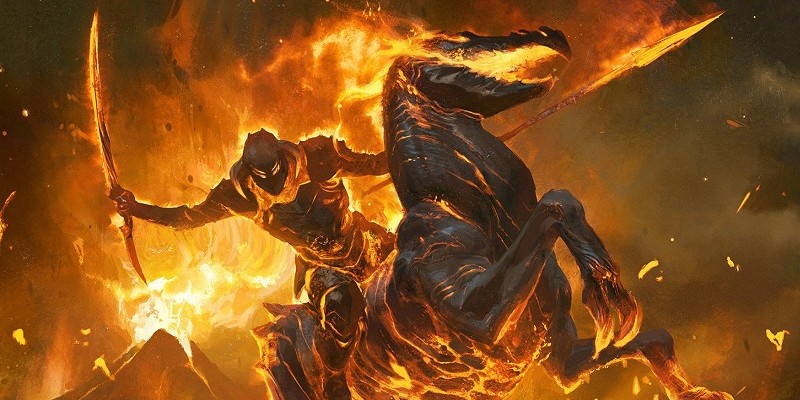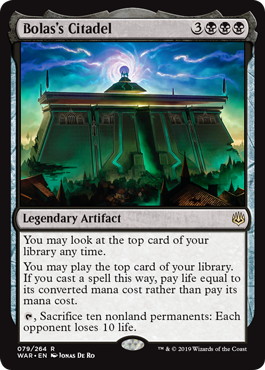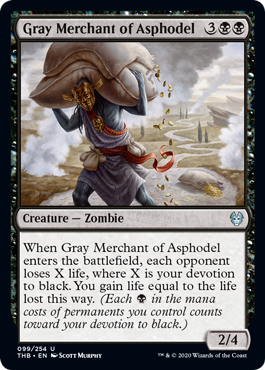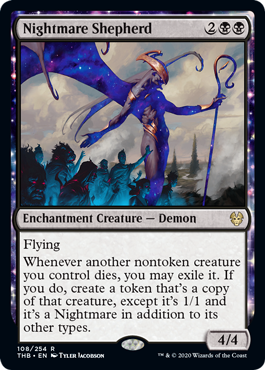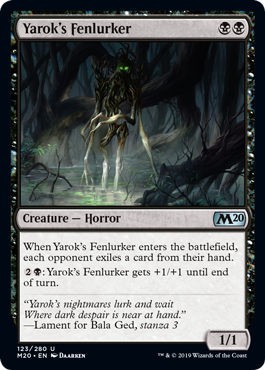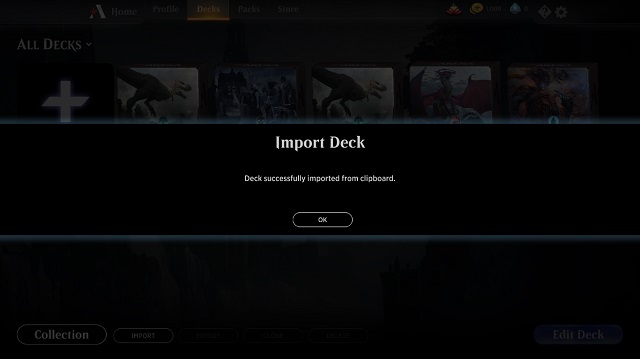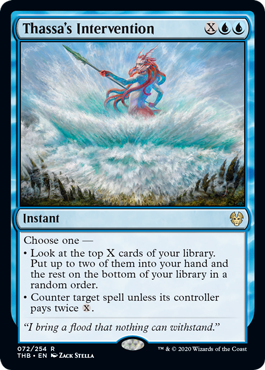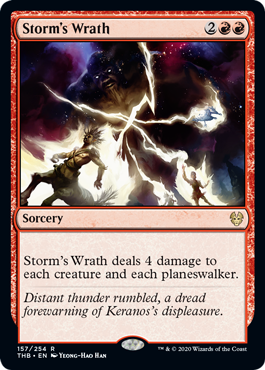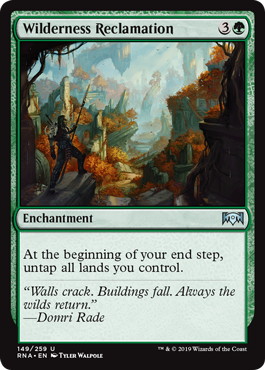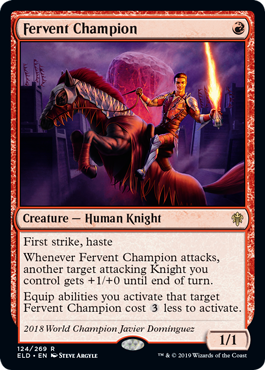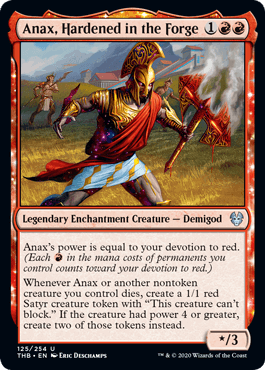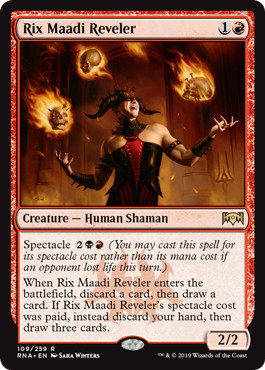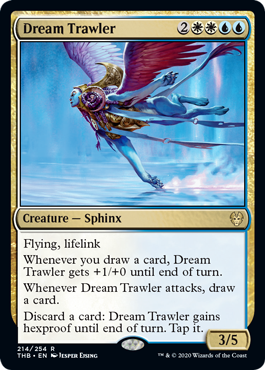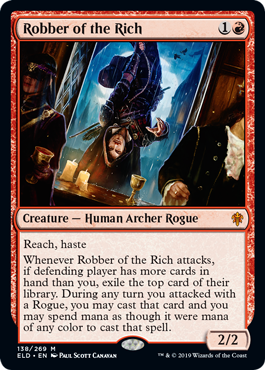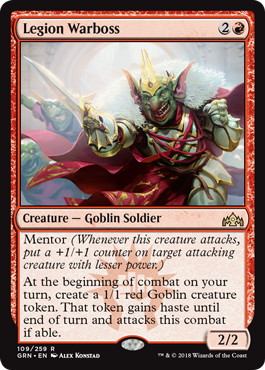Introduction
Hola!
Magic World Championship XXVI took place in Honolulu and we saw 16 players, including myself, trying to become the 2019 World Champion. At the end (spoiler!) it was Paulo Vitor Damo da Rosa (PV) who took the trophy home and basically made sure he has pretty much every single kind of trophy ever made for Magic: The Gathering.
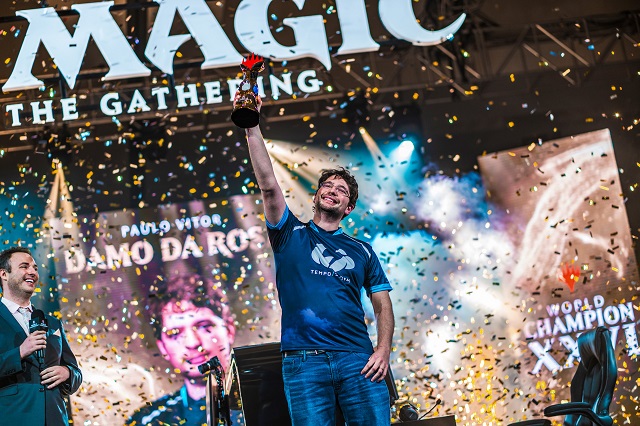
Image Copyright: MAGIC ESPORTS
How did my tournament go? Poorly! As in every tournament where things go poorly, it usually involves a combination of some bad luck and some things you could’ve done better. This was no different, even if it was a painful hit. There is a lot of room for improvement and I could’ve played better, particularly in the last round, but some days things just don’t go well.
However, I’m here to talk about how I prepared the tournament!
My Preparation
I prepared the tournament with Marcio Carvalho, who eventually ended losing the finals (again!) to PV.
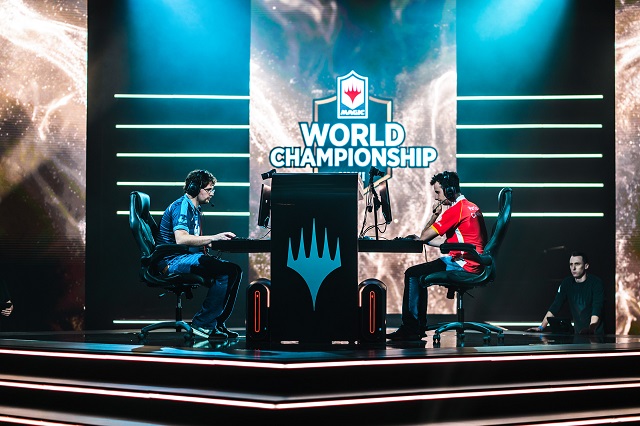
Image Copyright: MAGIC ESPORTS
Limited
We didn’t do anything special for Limited past drafting a lot on Theros Beyond Death. Drafting in a table like the ones you have in a tournament like Worlds, where everyone is super good, is not exactly easy to replicate. That would be the case for everyone in the tournament, so we were not very concerned. Other than that, a Draft is still a Draft, so we just played as many as we could. After a few days of playing mostly Limited we decided our time would have a better return if we focused on Standard, so we switched and worked mostly on the Constructed portion.
2020 Standard
With the Regional Players Tour being Pioneer, Standard wasn’t getting a lot of attention. Without many high level tournaments happening on the Standard format after the release of Theros Beyond Death, the new format felt relatively unexplored. We thought there was a decent chance that some of the great deckbuilder minds in the tournament could break it, but we also knew it wouldn’t be us breaking it. Our plan was learning every tier 1 deck in the format and then decided which one had a better position in the metagame.
The first thing we wanted to do was exploring the archetypes that were built around the new cards, since decks like Jeskai Fires were not very likely to change much, plus we already knew them.
The first deck that caught our attention was Mono Black.
Mono Black
We started with the devotion builds and early identified 《Bolas’s Citadel》 as a very powerful card in the deck. In combination with cards like 《Gray Merchant of Asphodel》, Citadel would sometimes end the game on the spot even on an empty battlefield, which felt very powerful. After playing enough, the deck felt like it had too many fillers and we moved some of the cards to make room for the 《Cauldron Familiar》 + 《Witch’s Oven》 package.
《Nightmare Shepherd》 was probably the best card in every version, since it just had sinergy with many of the cards, and made 《Ayara, First of Locthwain》 a bomb in many boardstates, including topdeck wars where you could sacrifice a 《Yarok’s Fenlurker》 in the opponent’s draw step so they would be forced to exile it before having a chance to cast any sorcery speed spell. The sinergy with 《Gray Merchant of Asphodel》 also made it so the deck could really deal 20 damage out of nonwhere as long there was enough devotion and a sacrifice enabler. Overall, I think this demon is very likely to eventually see some play.
We ended liking the 《Burglar Rat》 version the most, since it felt like playing more 《Yarok’s Fenlurker》, which were already our best curve play in many matchups.
At the end, Mono Black ended being a deck where game 1s are just too bad. Post sideboard, the deck could be adapted to defend against either creatures or the stack (through discard), but every card that was making the aggro matchup better was completely useless everywhere else, and in a deck really hated to have dead cards because of how devotion works, it was just an unsolvable problem. Having a bad Jeskai Fires matchup both pre and post sideboard also didn’t help.
- Javier Dominguez and Marcio Carvalho
- – Mono Black
- Test Deck
4 《Castle Locthwain》
-Land (26)- 2 《Gutterbones》
4 《Yarok’s Fenlurker》
2 《Burglar Rat》
4 《Ayara, First of Locthwain》
4 《Murderous Rider》
3 《Midnight Reaper》
4 《Nightmare Shepherd》
2 《Dread Presence》
4 《Gray Merchant of Asphodel》
-Creature (29)-
3 《Specter’s Shriek》
2 《Cavalier of Night》
2 《Disfigure》
2 《Epic Downfall》
1 《Duress》
1 《Agonizing Remorse》
-Sideboard (15)-
Temur Reclamation
Temur Reclamation simply started looking like a very good deck really fast, since the new additions from Theros Beyond Death really made this deck very strong. It was common to see across the social media many posts about how this deck was the best deck, and I think it was clearly the best deck for some days.
After picking it up, I thought the reason for Temur Reclamation to be so good was that it was extremely good at beating midrange decks, like the 《Nissa, Who Shakes the World》 decks or Jund Food. Even though I never really loved the deck, it just seemed to be a deck without many holes; just a very strong archetype that could go over the top of the other decks while having a good post sideboard games thanks to how good 《Uro, Titan of Nature’s Wrath》 is. I think it is easy to underestimate how much important this card is in the deck, since it provides a different angle on attack while not being problematic to cast the (1)(U)(G) part of the card in a deck that just wants to have a lot of mana.
We had Temur Reclamation among the best decks, but we had our first disagreement point. I felt Temur was good against Fires, mostly based on the previous experience from playing the format and how it felt on the ladder, while Marcio insisted Fires was not only not behind, but slightly ahead.
We decided to play enough to make sure we were on the same page on this matter. At the end, our conclusion was that Marcio was right, as I’d rather be on the Fires side, which was unexpected for me. The combination of pressure + 《Teferi, Time Raveler》 was very strong, and post sideboard things really didn’t get easier. It was still heavily play/draw dependent, but I did not expect this matchup to play the way it played for us.
- Javier Dominguez and Marcio Carvalho
- – Temur Reclamation
- Test Deck
2 《Island》
1 《Mountain》
4 《Breeding Pool》
4 《Steam Vents》
4 《Stomping Ground》
2 《Fabled Passage》
3 《Temple of Epiphany》
2 《Temple of Mystery》
1 《Temple of Abandon》
2 《Castle Vantress》
-Land (27)- 2 《Hydroid Krasis》
4 《Brazen Borrower》
3 《Uro, Titan of Nature’s Wrath》
-Creature (9)-
4 《Growth Spiral》
4 《Thassa’s Intervention》
4 《Storm’s Wrath》
4 《Expansion/Explosion》
4 《Wilderness Reclamation》
-Spell (24)-
3 《Scorching Dragonfire》
3 《Mystical Dispute》
2 《Aether Gust》
2 《Negate》
2 《Flame Sweep》
-Sideboard (15)-
Mono Red
With Temur Reclamation not being particularly good against Fires and with the midrange decks having less presence every day because of their weak matchup against Reclamation, Red was looking very good to my eyes.
We initially expected the Red vs Temur Reclamation to be very good for the red mage, but it wasn’t our experience once we played a lot with it. We still preferred to be on the Red side, but barely. That was also the case against most matchups, and we really liked Red. Removing 《Shock》s from our deck felt very natural, and we ended liking playing without 《Light Up the Stage》.
- Javier Dominguez and Marcio Carvalho
- – Mono Red
- Test Deck
4 《Blood Crypt》
4 《Castle Embereth》
-Land (23)- 4 《Fervent Champion》
4 《Scorch Spitter》
1 《Tin Street Dodger》
4 《Rimrock Knight》
4 《Rix Maadi Reveler》
4 《Anax, Hardened in the Forge》
4 《Bonecrusher Giant》
3 《Phoenix of Ash》
3 《Torbran, Thane of Red Fell》
-Creature (31)-
3 《Scorching Dragonfire》
2 《Tibalt, Rakish Instigator》
1 《Phoenix of Ash》
1 《Lava Coil》
1 《Redcap Melee》
1 《Fry》
1 《Experimental Frenzy》
1 《Chandra, Fire Artisan》
-Sideboard (15)-
My perception was that Red was likely the actual best deck in the format, since it could go under everyone, but also play highly powered games with cards like 《Anax, Hardened in the Forge》, 《Torbran, Thane of Red Fell》 and 《Embercleave》. It also didn’t have many weaknesses… except its matchup against Fires. For some days, we were very likely to play Mono Red. With 《Rix Maadi Reveler》.
UW Control
With only a few days remaning, the UW breakout happened. Corey Baumeister showed the world a very good version of the deck and suddenly… it was everywhere!
We identified UW as a very good deck, but we also thought it was not a deck we would like to play at Worlds. Not only we preferred to be proactive, but there was also a chance other players could have better version for the mirror matches, and playing a control mirror with a worse version is a very bad position I’d like to avoid during a tournament if I can. Taking in account how good UW was, we decided to tune our decks (Fires and Red) slightly to be a little bit better against UW instead of switching to that archetype.
Jeskai Fires!
We settled on Fires about two days before the submission deadline so we could spend some time tuning the archetype. The biggest reason was that it was the best deck against Mono Red, which we perceived as very strong, while not having a very bad matchup against any of the decks we expected to see in the metagame. We didn’t love our UW matchup, but we expected Mono Red to be more popular so we took this direction. We also didn’t expect Fires to be targeted by our opposition, which is an important factor going into an event like Worlds. It is always better if you can stay off the radar!
This is what we both me and Marcio ran at Magic World Championship XXVI:
- Javier Dominguez and Marcio Carvalho
- – Jeskai Fires
- Magic World Championship XXVI
- (Standard)
2 《Mountain》
1 《Plains》
4 《Hallowed Fountain》
4 《Steam Vents》
3 《Sacred Foundry》
3 《Fabled Passage》
3 《Temple of Epiphany》
3 《Temple of Triumph》
2 《Castle Vantress》
-Land (27)- 4 《Bonecrusher Giant》
4 《Sphinx of Foresight》
4 《Cavalier of Flame》
3 《Kenrith, the Returned King》
2 《Cavalier of Gales》
2 《Dream Trawler》
-Creature (19)-
1 《Shimmer of Possibility》
3 《Deafening Clarion》
4 《Fires of Invention》
4 《Teferi, Time Raveler》
-Spell (14)-
3 《Legion Warboss》
1 《Tithe Taker》
1 《Aether Gust》
1 《Devout Decree》
1 《Disenchant》
1 《Justice Strike》
1 《Deafening Clarion》
1 《Shatter the Sky》
1 《Elspeth Conquers Death》
-Sideboard (15)-
If you want to learn more about how the deck works and how to sideboard with it, Hareruya Pros and Hall of Famer Raphael Levy wrote an excellent article about the deck. Our version was heavier while theirs had more interaction thanks to 《Brazen Borrower》, while we concluded that 《Dream Trawler》 was simply too good not to play. Overall, though, the core is still the same and the small differences don’t really affect how the deck operates.
The deck already plays enough lands to cast 《Dream Trawler》, and it was a card that we liked on the situations where our opponents were able to interact with our 《Fires of Invention》, since this Sphinx can take over a game by itself.
The piece of tech Levy/Gabriel Nassif had that we missed was 《Robber of the Rich》.
While I’ve never liked 《Robber of the Rich》. I think it was very smart addition for the event, where we were not super high on 《Tithe Taker》. I haven’t played much with it, but I think the natural curve of Robber into 《Teferi, Time Raveler》 is likely the most powerful thing Fires can do against UW. Getting under countermagic like 《Mystical Dispute》 even on the draw can make a huge difference. There’s also the possibility of a split between Robber and 《Legion Warboss》, since they seem to perform better in different situations.
Conclusion
Magic is always changing and it is very important to stay flexible and be willing to reevaluate every matchup and every card when it is the time to do so. Sometimes a card or a deck can be great for only one tournament, and the finding the right time to play certain strategy or card can be a huge advantage.
Thanks for reading!


